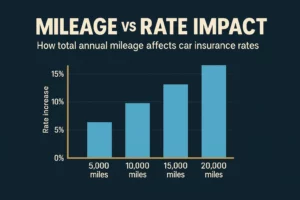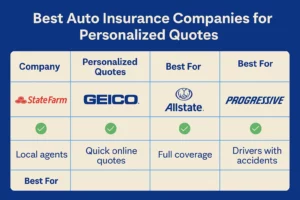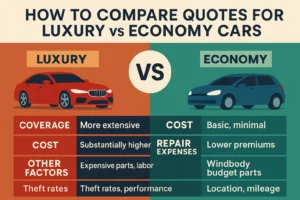When shopping for car insurance, the goal isn’t just to find the cheapest price — it’s to get an accurate auto insurance quote that reflects what you’ll actually pay. Too many drivers waste time with “quick estimates” that change dramatically once the fine print kicks in. Learn how to compare insurers properly.
In this guide, we’ll walk you through how to get a truly fair and transparent car insurance estimate in 2025 — and how to avoid the bait-and-switch traps.
Why Accurate Pricing Matters in Auto Insurance
A properly calculated quote helps you:
- 🔒 Avoid surprise rate increases later
- 📊 Compare apples-to-apples across insurers
- 💰 Budget confidently for your premium
- ✅ Ensure the policy matches your actual needs
Inaccurate estimates can lead to underinsured coverage, rejected claims, or much higher premiums after underwriting.
1. Prepare All the Right Info Before You Start
The more detailed and honest you are, the more precise your rate will be. Before starting, prepare:
- 📄 Driver’s license numbers for all drivers
- 🚗 VIN (Vehicle Identification Number) for all vehicles
- 📅 Driving history (accidents, tickets, violations in last 3–5 years)
- 📍 ZIP code where the car is parked overnight
- 🚘 Annual mileage for each vehicle
- 💼 Employment status and usage (commute, business, personal)
2. Be Honest About Driving History
Insurers verify your driving record using databases like CLUE (Comprehensive Loss Underwriting Exchange). Hiding incidents only leads to pricing jumps later.
3. Compare Rates from Multiple Sources
Use reputable comparison tools like
The Zebra,
Compare.com,
Policygenius, and
Insurify.
Enter identical data on each platform to get consistent comparisons.
4. Match Coverage Levels Exactly
Don’t compare a basic liability-only quote from one provider to full coverage from another. Use the same:
- Deductible amounts
- Liability, collision, and comprehensive limits
- Add-ons like roadside assistance or rental coverage
5. Consider Telematics or Usage-Based Insurance
Safe or low-mileage drivers can benefit from programs like Snapshot®, Drivewise®, or SmartRide® that tailor pricing to real habits — often making quotes more realistic and fair.
6. Don’t Forget to Ask About Discounts
Discounts aren’t always automatic. Ask about:
- Multi-policy (home + auto)
- Good student or senior status
- Military, teacher, or professional memberships
- Safety features or anti-theft devices
Final Thoughts
The key to getting an accurate auto insurance quote is being honest, thorough, and consistent. The more transparent you are, the more your quote will match your final rate — no surprises or disappointments.
Take your time, compare carefully, and always read the fine print before clicking “purchase.”




